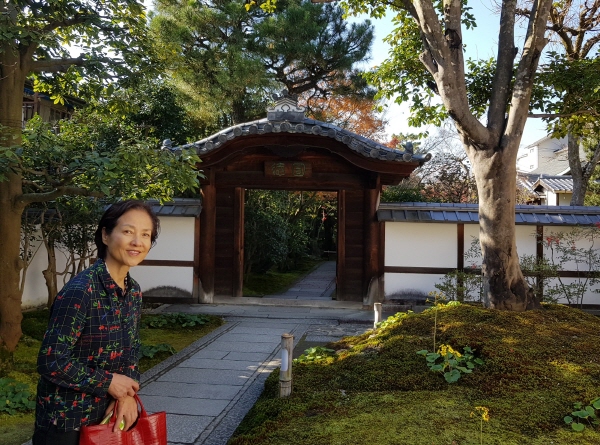
Entrance to Nene’s house Entokuin
People of Nenenomichi
Gion is an old town and Kyoto’s main tourist attraction with many many stores. And Higashiyama, not far from Gion is a place with a certain dignity and a classy atmosphere.
There is a road with a historic atmosphere, Nenenomichi. Nenenomichi is always crowded with people from all over the world.
Kodaiji was built by the widow of Toyotomi Hideyoshi, the first unifier of Japan. His widow wanted to pray for her late husband in Kodaiji right after he died. It was the first time for a woman to build a place of such scale, so she is called “the first female architect in the world” and the road was named Nenenomichi meaning Nene’s lane, in honor of her.
I have learned of the road after staying at the ryokan “Rikiya” which is near there.
I entered through an open door into Rikiya on Nenenomichi, and the Okami (the mistress of a house) was sitting in the first room of the house. The reason a ryokan in Japan is more expensive than a hotel is because they serve breakfast and dinner and offer great service.
But Rikiya stopped offering those services and just charged 12,000 yen for a clean tatami room. It was a great bargain considering its great location and the view overlooking the garden. They offered me the room at 10,000 yen probably because I was a frequent guest. Okami also told me that she fell in love with Yonsama when Winter Sonata was all the rage in Japan – I suspect that was a reason, too. Yet afterwards, Rikiya became so popular that all the rooms were booked even after charging Middle Easterners several times the usual charge, and because of this I had to move to a hotel near Doshisha University. But I had become fond of Okami and the staff.
During the tsunami in Japan in 2011, no tourists came to Kyoto, even though Kyoto was very far from where the earthquake occurred. Taxis were lined up in Nenenomichi and I was the only guest in Rikiya. That was back when my poems and other articles about me were published in NHK, Asahi and Sankei and requests for other poems bombarded newspaper offices which resulted in my publishing two books in Japanese.
One evening, I came back to Rikiya to find a letter saying that they were moved by the book and wanted to meet me. There are not many stores in Nenenomichi, and I went to the agreed-upon place to find Kyoto books in display. The sophisticated-looking woman who wanted to meet me was the volunteer director at Kodaiji, and she asked me to give a lecture there if possible. She also gave me admission tickets for Kodaiji and Entokuin.
One day, I had to go to the airport to go back to Korea, but I couldn’t find my wallet. I ran to the restaurant I had dined in next to the bookstore and the two stores that I had visited but couldn’t find it. I talked to Ms. Murakami at the bookstore and went back to Korea; a few days later, I got a package containing my wallet from her.
I’ve been visiting Japan for 50 years. A few years ago, I lost my wallet in Tokyo and found my wallet turned into a police station an hour later. And I found my wallet in Kyoto, too, after losing it. I was surprised as I thought such a thing would only be possible if almost every citizen was honest. I was also surprised at Ms. Murakami’s endeavor of reporting, finding and sending me the wallet.
Rakusho teahouse is also on Nenenomichi. The old owner of Rakusho did many great things for the village, such as planting street trees in the road, and a memorial stone in memory of him was erected in Nenenomichi. Whenever I have time, I go to Rakusho to see fancy carps, four times thicker than the width of my forearm, flopping in the pond. The owner of the teahouse welcomes and treats me with warabimochi and tea, saying a writer came from Korea.
On the opposite side of Kodaiji is Entokuin, where Nene used to live. It is humble compared to the big Kodaiji, yet it is a lovely place. There are several stores nearby. There is a place that serves green tea buckwheat noodles and green tea ice cream, as well as a souvenir shop. And my favorite place is a store that sells brushes, papers and shikisi (a thick lithograph for writing poetry) which I buy everytime.
Rickshaws are standing on Nenenomichi, adding to the appeal of the old capital. Rickshaw workers tell a story of the places with several hundreds of years of history like the oldest shaved ice store in the narrow alley. I say hello to the now-familiar rickshaw workers.
At the end of the road is The Sodo Restaurant I like. It was the house of a very famous modern painter. Their garden and food are special, so everyone likes the place. There are two men standing in front of the big gate with reservation books, with whom I also exchange greetings.
Like this, I have been going to Nenenomichi to greet and talk to these people for the last 20 years. Of course I cannot meet Nene who built Kodaiji and lived in Entokuin 400 years ago but I am meeting her descendants.
When I first went to Tokyo, I met classmates and acquaintances of my parents. Now, my exchange expanded to include my classmates, people from Doshisha, my old neighbors, people from Nenenomichi and the Kyoto Mayor. My culture essays are sent in Japanese to them as my greetings across the Korean strait.
I am facing them individual to individual but thinking about it, I am Korea to them and their heart, attitude and thoughts are Japan to me.
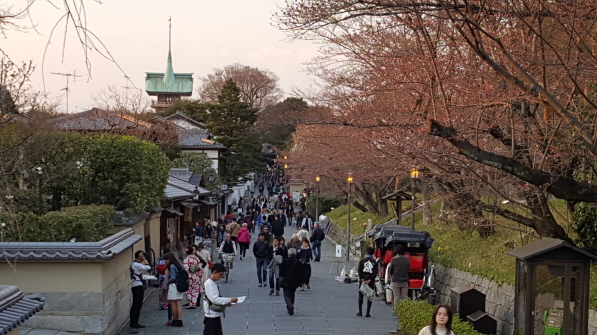
Nenenomichi, Higashiyama Kyoto - Apr 6 2019
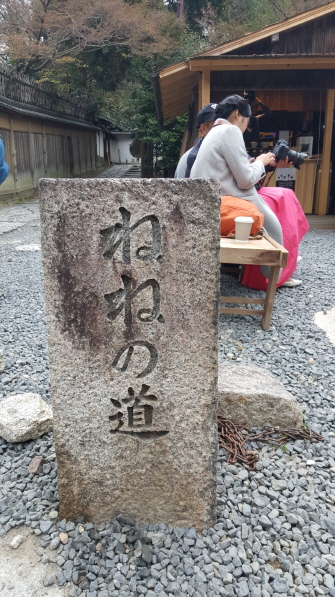
A stone slate with ‘Nenenomichi’ engraved
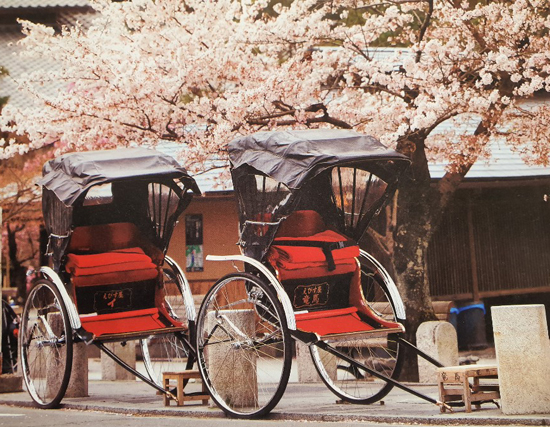
on the Nenenomichi
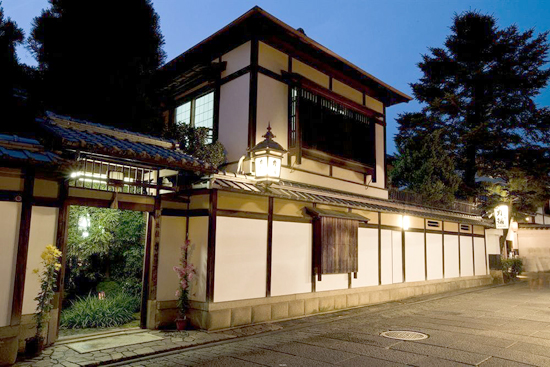
Ryokan Rikiya that I stayed regularly - Neenomich Kyoto
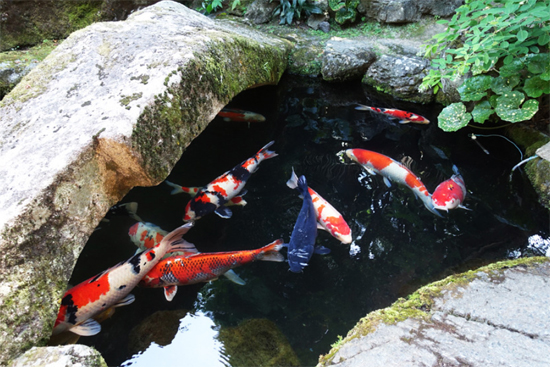
Koi Fish of the pond of Rakusho - Nenenomichi 2019 4
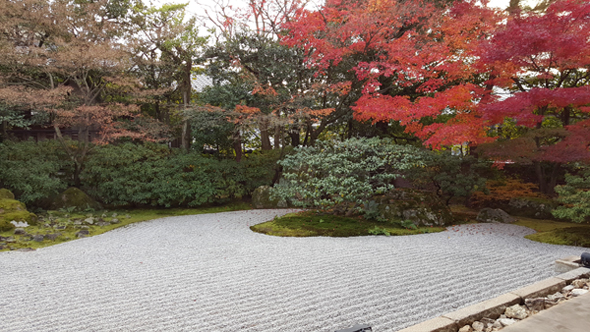
Zen Garden at the mouth of Entokuin in autumn Kyoto Dec 2016
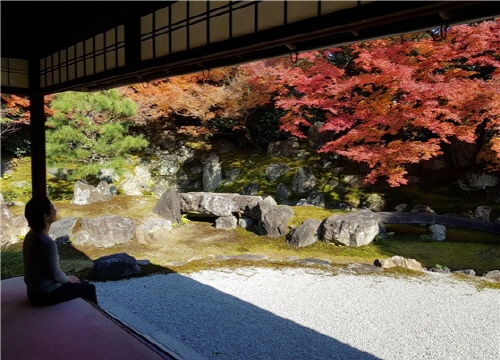
The Garden deep inside Entokuin - Dec 3 2017




